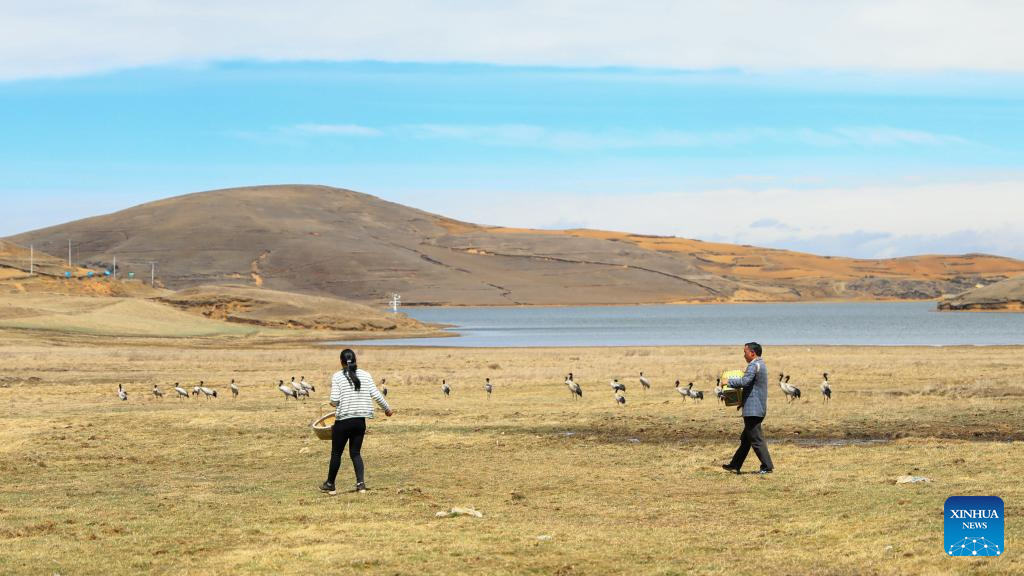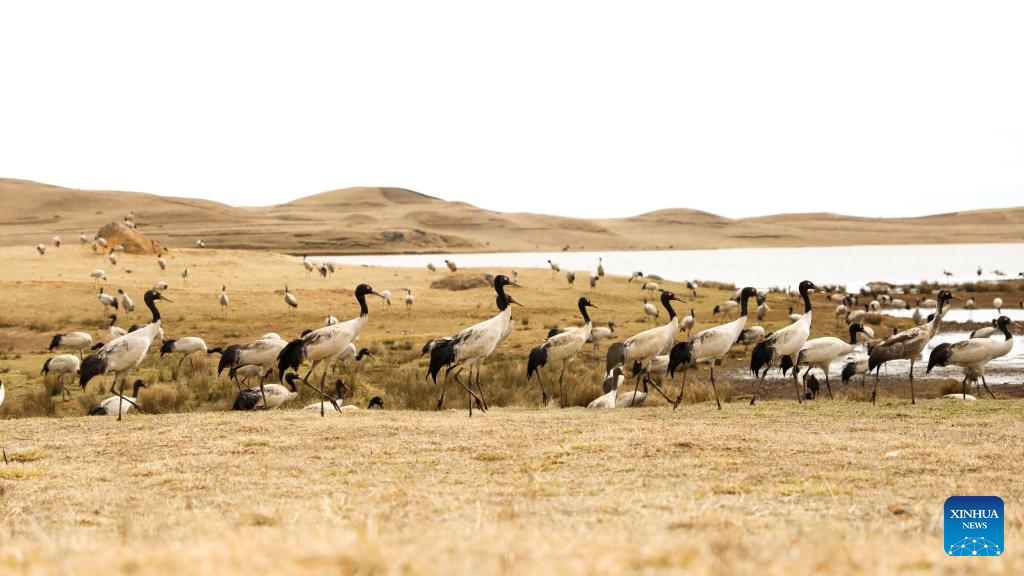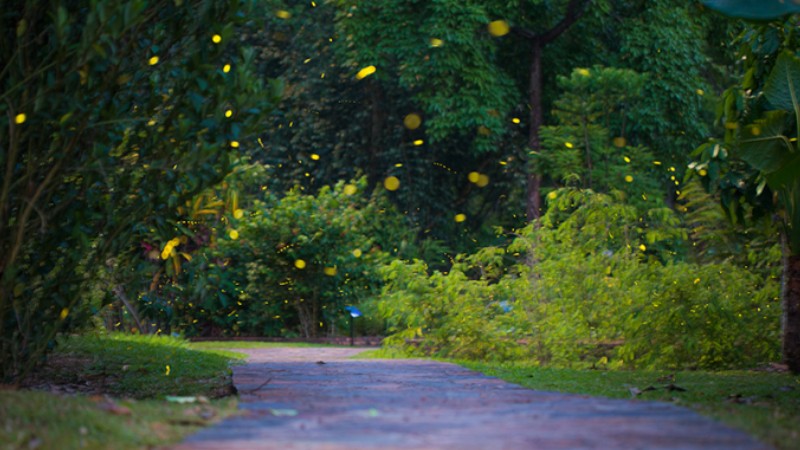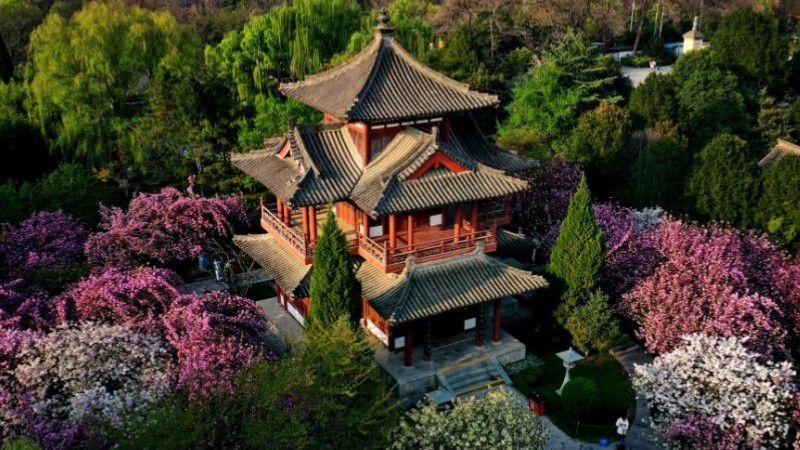Yunnan helps cranes make migration journey

Staff members guarding the cranes feed black-necked cranes at the Yunnan Dashanbao national nature reserve, southwest China's Yunnan Province, March 23, 2023. (Photo by Shen Chunyan/Xinhua)
KUNMING, April 6 (Xinhua) -- The local villagers in the city of Zhaotong of southwest China's Yunnan Province view the black-necked crane as auspicious birds, and many, along with professional staff, volunteer to keep them fit and healthy ahead of their northward migration each spring.
The black-necked crane is under top-class protection in China. The Dashanbao national nature reserve is among the protected areas with the largest populations of black-necked cranes per unit area in China. It is also an important wintering habitat and migration transit point for the birds on the Yunnan-Guizhou Plateau.
The cranes fly to Dashanbao for wintering at the end of October every year, heading north again in March to return to their breeding grounds.
According to the latest monitoring by the reserve's management and protection bureau, the northward migration means the number of cranes in Dashanbao has dropped from over 1,900 during past the wintering season to some 200 at present.
Local authorities are making efforts to strengthen the work of feeding, patrol monitoring and rescue activity, thereby helping the remaining birds make the spring migration in good health.
The Dahaizi Wetland is one of the main wintering habitats of black-necked cranes in Dashanbao, and it is also the nighttime resting place and foraging place with the largest population in the reserve. Since the northward migration period started, volunteers guarding the cranes have started feeding the birds twice a day on average, rather than just once.
Zheng Yuanjian, a staff member with the management and protection bureau, said that, based on the monitoring results from the past two years, the population of black-necked cranes in Dashanbao has increased year by year. "From the perspective of family structure, we found that three-member or four-member crane families are on the rise compared to previous years," he said.
Authorities have been restoring wetlands and setting up food-source bases for the cranes. The bases established in the reserve currently cover an area of 250 hectares.
Over the past three years, the average number of black-necked cranes coming to the reserve for wintering was 1,500 per year.
Wu Taiping, an engineer with the reserve's management and protection bureau, said, "The migration of black-necked cranes is related to the weather, wind speed and wind direction. The weather has been fine recently, which is suitable for the long-distance flight of the cranes traveling northward."
He added that most of the birds flew northward in middle and late March in previous years, while a few young cranes would stay until the end of April or the beginning of May.
The bureau will continue to carry out wetland and grassland restoration work to create a more comfortable wintering environment for black-necked cranes, said Wu.

This photo taken on March 23, 2023 shows black-necked cranes at the Yunnan Dashanbao national nature reserve, southwest China's Yunnan Province. (Photo by Shen Chunyan/Xinhua)

This photo taken on March 23, 2023 shows black-necked cranes at the Yunnan Dashanbao national nature reserve, southwest China's Yunnan Province. (Photo by Shen Chunyan/Xinhua)
Photos
Related Stories
- Endangered crane spotted in north China's Tianjin
- In pics: Female workers at a construction site in E China's Anhui
- Population of black-necked cranes surpasses 10,000 in Tibet, China
- Endangered white cranes spotted in SE China’s Fujian
- Migrating grey cranes fly to national wetland park in SW China's Yunnan to overwinter
Copyright © 2023 People's Daily Online. All Rights Reserved.









